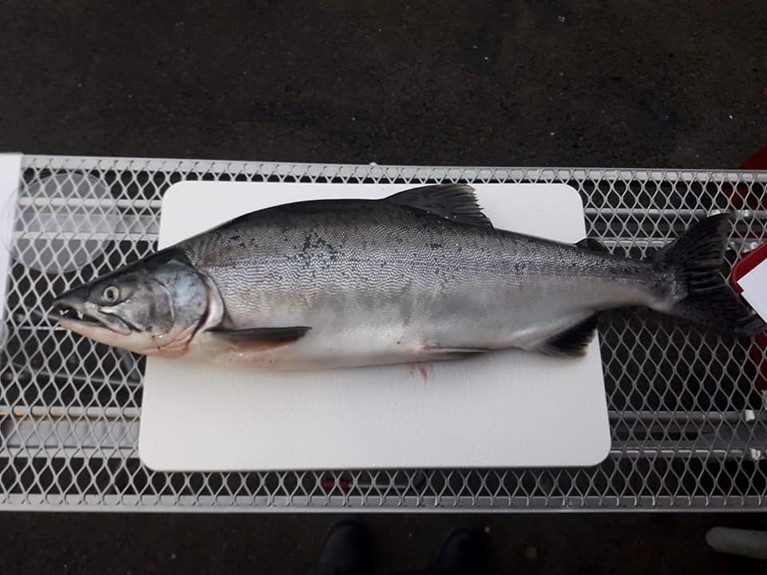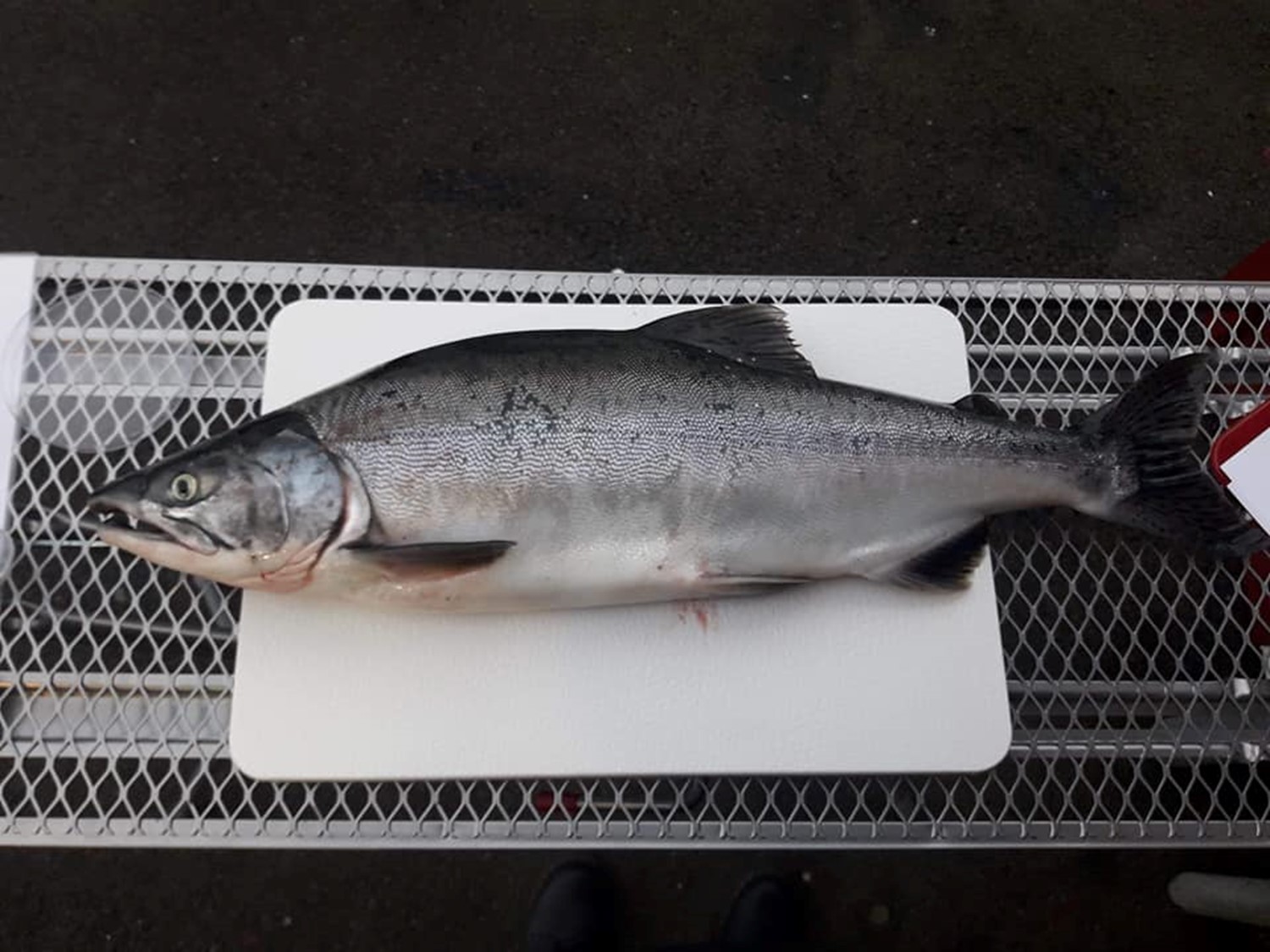Humpback salmon (or: pink salmon): Distribution and disease
Fishers and anglers occasionally catch a humpback salmon, but we know virtually nothing about the extent presence of this fish in Faroese fiords and rivers. Also, we don’t know if the humpback salmon spawns here, if it carries any diseases, as we don’t know its migrant patterns. This project will record the catches of humpback salmon, examine it for diseases and determine if they spawn in Faroese waters – or not.
The humpback salmon is easily recognized by the hump on the back, and by its white mouth and black palate. It usually weighs around 2.2 kg, while the largest on record weighed a whopping 6.8 kg.
It is not possible Firum to conduct this project single-handedly. This is why we encourage all who catch a humpback salmon to give it all to Firum in return for financial compensation. The fish must be whole and as fresh as possible, i.e. either gutted or frozen.
For any further questions, please contact Firum on phone +298 774 703.
Contact: Dr. Kirstin Eliasen, head of department and researcher.
The project is financed by the Faroese Aquaculture Association
Sea Trout Well-being
Our current knowledge about sea trout in Faroese lakes and ocean is limited. This project will investigate the well-being of adult sea trout in and between years.
In addition to collecting sea trout, we hope that sport angles will help us do this as well. There will be the possibility of winning 10,000 DKK in an annual draw between all the samples that have been sent to Firum.
Contact: Dr. Kirstin Eliasen, head of department and researcher.
The project is financed by the Faroese Aquaculture Association
Sea Trout Migrant behaviour
Like with the adult sea trout, our knowledge of sea trout smolt is very limited, too. This project aims to determine when the smolt makes its initial journey into the sea. We will pay particular attention to when the smolt ventures to sea, under which circumstances, and how big the smolt is around that time.
For this purpose, a trap is installed under the bridge crossing the river “Sandá” in Tórshavn. It is operational between March and July for the duration of this project.
This knowledge will provide the aquaculture industry with information that may call for special consideration for the sea trout stock during particularly vulnerable or exposed periods.
Contact: Dr. Kirstin Eliasen, head of department and researcher.
The project is financed by the Faroese Aquaculture Association.

 Everyone is welcome to participate in important research, such as mailing scale samples or whole humpback salmon to P/F Fiskaaling
Everyone is welcome to participate in important research, such as mailing scale samples or whole humpback salmon to P/F Fiskaaling
